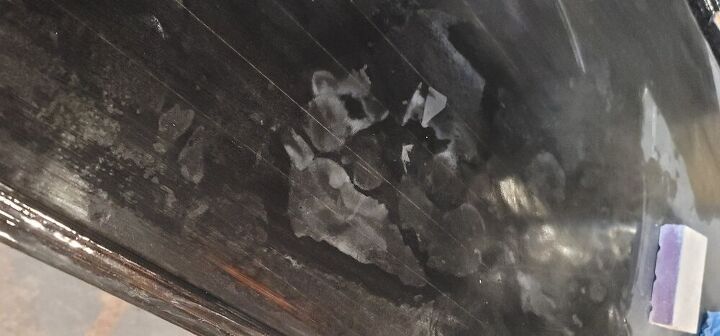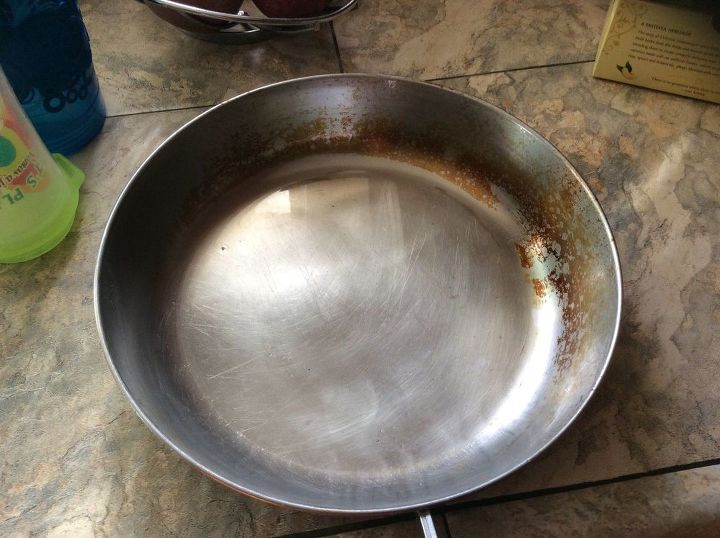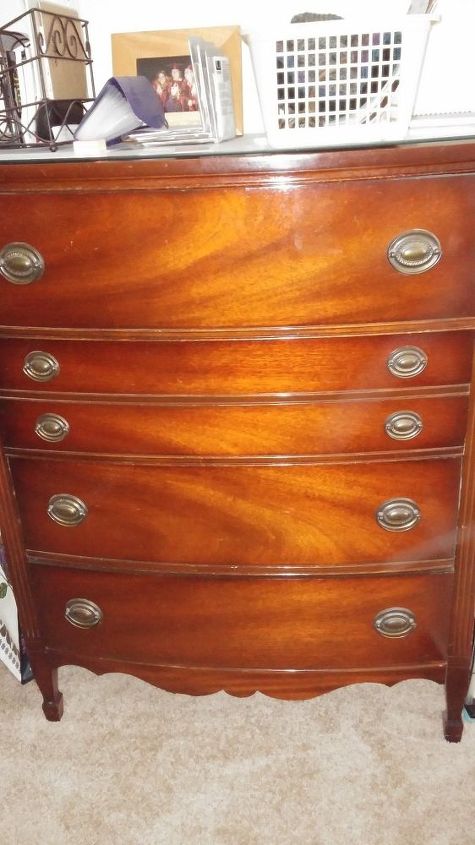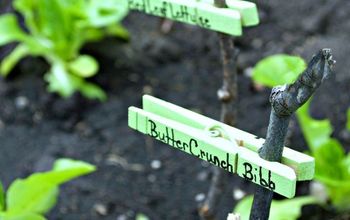One area!
There's a white residue pattern on top of my epoxy Bar

There are white residue patterns all over the top of the bar top what is it and how do I fix it and it's not bubbles!!
Related Discussions
How to clean a mirror without streaks?
Every time I clean my mirrors, they end up having tons of streaks and almost look worse than before I started. What could I use to clean them that won't leave streaks... See more
How to clean burns on stainless steel pans?
Help! I burned my pan. How do I clean stainless steel cookware that's been burned?
How to clean hardwood floors in the kitchen?
What is the best way to clean hardwood floors in the kitchen?
How to clean my kitchen cabinets from grease?
My kitchen cabinets are embarrassingly greasy. Please share your degreasing tips with me so I don't have to cringe every time I glance at my cabinets.
What do I do about a stinky dresser?
I have this antique dresser we bought a few months ago that we've been trying almost every way imaginable to get rid of a "stinky perfume" type odor (which to someone... See more
Remove odor from antique dresser drawers
My dressers are 65 year old mahogany. My clothes all smell like old musty wood. There is no water damage or mildew, just old age. I have tried odor neutrilizers, news... See more






50% rubbing alcohol was used to clean Before applying the 2nd coat would that make Any difference?
It sounds like 'blushing' caused by high humidity or the base not being completely dry. Here's a link:
https://woodepoxyworld.com/why-epoxy-gets-cloudy-and-what-to-do-about-it/
A couple of solutions here, even though this is for a different project than yours, the same principles apply:
https://resincraftsblog.com/how-to-fix-cloudy-resin-projects/
Here's a post that might help https://www.crosslinktech.com/support/faq/29-handling-processing-related/31-epoxy-turned-white-in-some-areas.html
I'm not sure how to fix this as it appears to be inside the finish. I hate this for you but if you figure out how to fix without taking it all the way down I would love to see this posted.
Katie
Do you know who the mfg. was of the stuff you used? call them and see if they can tell you what to do next....I can't imagine what caused this unless the alcohol wasn't dried all the way or the finish wasn't dried first
You can try soaking a clean cloth to an acetone/nail polish remover and use it to remove the stain.
I would suggest calling your epoxy manufacturer to see what explainaion and solution they might offer
To me it sounds like the alcohol did strip the finish and the residue is stopping the new finish from adhering. I would try to lightly sand off the finish. A magic eraser would be good for this, because it is a very fine sandpaper. When you get the top smooth, give it another coat.
Looks like glue was on your arm and you leaned on it and it dried
I agree the 50% alcohol was probably not fully dry and it’s inside the epoxy.
Bubbles can come from a couple of different sources. Epoxy itself can create bubbles as part of the reaction of the resin and hardener, so it is very important when using a thicker epoxy material, such as TotalBoat TableTop Epoxy, to apply it in thin coats, as directed on the product. When it is applied too thickly, the bubbles naturally try to rise to the surface and get trapped. Waving a heat gun or hair dryer can help warm the epoxy for just a few seconds, helping these bubbles to rise to the surface and pop more easily by means of convection. This can help when the epoxy is first poured, but should not be done any more than 15-20 minutes after pouring TableTop Epoxy.
Applying TableTop Epoxy to a bare wood substrate can also create bubbles if the wood has not been previously sealed. Wood naturally has air in the grain, and when an epoxy coating is applied to it, the epoxy displaces some of the air. The epoxy also warms up as it cures, causing any air to rise from inside the wood up to the surface via convection. These bubbles may get trapped in the epoxy during their journey from inside the wood to the surface as the epoxy cures. Sealing the surface thoroughly with a thin seal coat of epoxy or varnish, then letting the seal coat cure prior to applying TableTop Epoxy, can prevent bubbles that would originate from the wood.
Aggressively mixing epoxy can whip microscopic air bubbles into the epoxy making it look white or cloudy. Always mix slowly, steadily, and thoroughly. Do not use a drill mixer or 'whip' the epoxy when mixing, as it will create many little bubbles that can be a challenge to alleviate once the epoxy is poured.
White spots, and cloudiness or hazing in epoxy are commonly caused by moisture, dampness, or other contaminants. Clear epoxy products such as TotalBoat TableTop will develop white spots as a sign of water or moisture from the air, in a substrate, or from any other sources. The best way to avoid having white spots is to prevent them by only applying TableTop Epoxy when the epoxy can go through its entire cure process without being exposed to moisture or damp conditions. Wood or other porous items that are being coated in the epoxy should be allowed to dry for a minimum of a few days first. Do not apply epoxy in high humidity conditions, or when rain, dew, fog, or any other forms of moisture can settle on the surface. Spots can also come up by embedding things that have surface contamination, or using colorants, tints, or other effects that are not compatible with the epoxy.